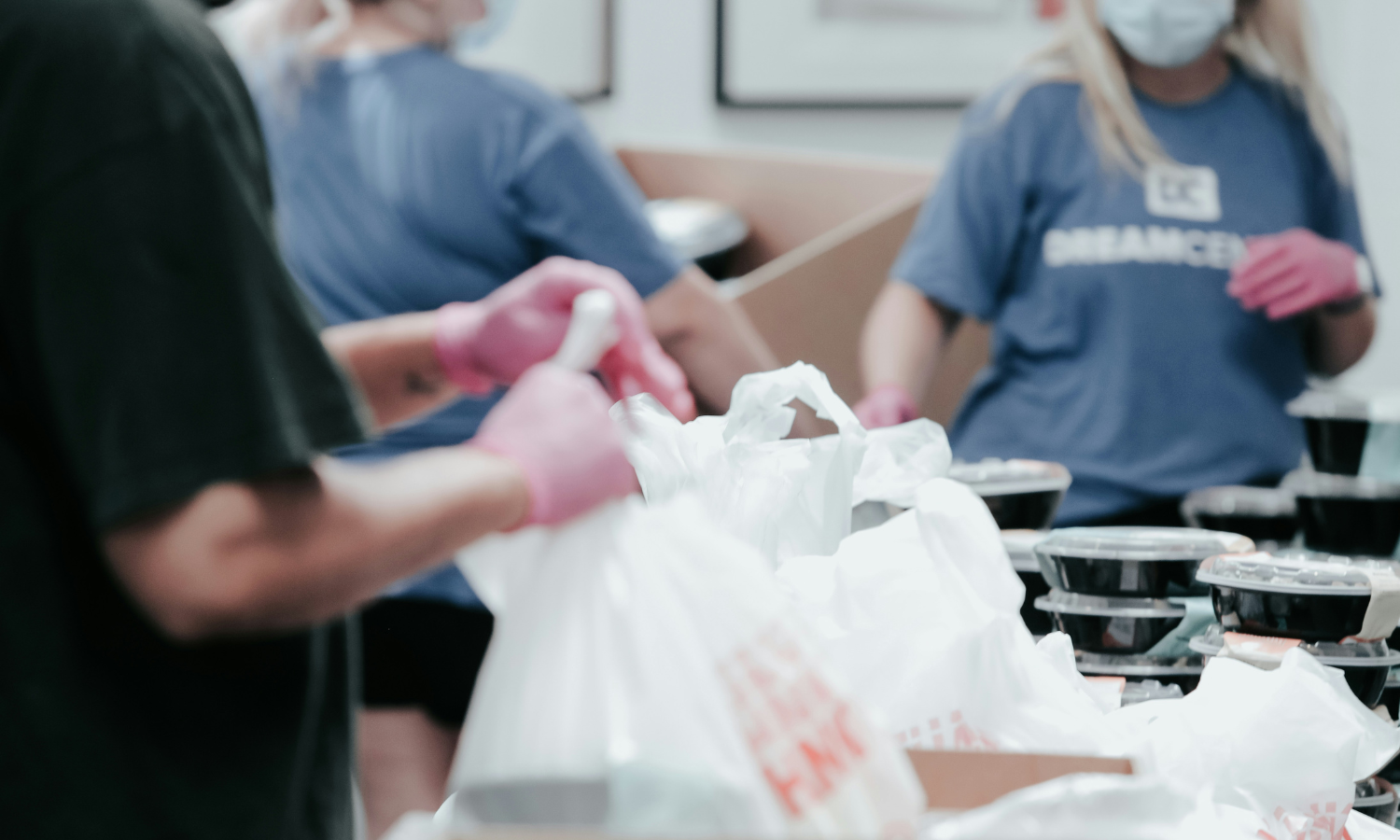As New York City struggles to feed tens of thousands of newly arrived asylum seekers, local organizations are stepping up to provide nutritious, culturally appropriate meals that meet their diverse dietary needs.
Around 200,000 asylum seekers have arrived in New York City since the spring of 2022, with approximately 61,000 seeking asylum in city-funded shelters, according to the New York City Comptroller. Under its right-to-shelter directive, New York City is required to provide shelter to anyone who has no safe place to sleep and cannot afford permanent housing.
State law requires that family shelter operators ensure residents can conveniently obtain three well-balanced meals daily—whether prepared at the shelter or externally by a vendor—and that dietary, nutritional, or religious restrictions are accommodated.
But in an effort to offer the necessary shelter, the city is turning to spaces that often lack cooking facilities, including offices, large tents, and warehouses. And a vendor contracted by the city to provide food to asylum seekers reportedly wasted 70,000 meals in under three weeks, with some recipients complaining of poor quality food.
Asylum seekers describe being served greasy pasta with raw or frozen meatballs, and meals that have visible mold. In a Documented survey of asylum seekers in 15 shelters across the city, all 58 individuals interviewed describe getting sick after eating shelter-provided meals, often resulting in stomachaches, vomiting, diarrhea, and occasionally, visits to the emergency room.
Mayor Eric Adams says that the city is unable to account for varying cultural food tastes. “We’re going to provide food for people,” Adams said when addressing complaints about shelter-provided meals. “People may have different cultural tastes for certain foods. We can’t do that.”
But organizations around the city believe that these communities should have access to meals that are nutritious, comforting, safe, and culturally appropriate, and are stepping up to make sure that’s the case.
“The recent increase in migrants seeking our assistance has been unprecedented,” Racquel Peters, Chief Development Officer of The Campaign Against Hunger (TCAH), tells Food Tank. The organization is facing increasing demand but, according to Founder and CEO Dr. Melony Samuels, has lost approximately half of its donors.
TCAH has distributed food to an average of 14,000 families weekly using the funds available, Samuels says.
Some organizations such as EVLovesNYC, a volunteer-run nonprofit, are adjusting their food services to meet the varying needs of their new neighbors. The organization has always offered vegan and vegetarian options. But recently, EVLovesNYC, which is located near the city’s first reticketing center—a place where asylum seekers can be processed into a new shelter after their stay in another one runs out—recognized the demand for additional meal options.
“We saw the need and we stepped up.” Ann Shields, Communications Director at EVLovesNYC tells Food Tank. Halal meals have recently become a big part of their weekly distribution, according to Shields. “Half of the meals we served this week were Halal.”
Flexibility is similarly central to RaisingHealth’s food service program, which provides foods that are specific to the populations they serve, says Hewett Chiu, President and CEO of RaisingHealth. “The way we design and put together the food itself is tailored to dietary requirements, but also the familiarity of these populations,” Chiu tells Food Tank.
To incorporate the cultural background and personal experiences into their services, these organizations must listen to the individuals they serve, Chiu says.
“We talk to them,” he tells Food Tank. “The organization takes time to engage in conversation and dialogue with our new community members. The organization learns a bit about their background, their story, some of their ongoing stressors, how they’re getting food and how they’re eating.”
These conversations help organizations learn about guests’ native dishes, favorite foods, or allergies, Power Malu, Founder of Artists Athletes Activists (AAA), tells Food Tank. “This is how we ensure the cultural preferences and dietary needs of our guests are met as well as making sure the food is edible for all. Something that is not taken into consideration at the city shelters.”
Recognizing the breadth of asylum seekers’ needs, organizations are also combining their food programs with other essential services and benefits.
RaisingHealth incorporates their food distribution into their weekly nutrition education workshops, mental health services, and other broader health services, Chiu says. TCAH offers financial workshops and helps eligible families enroll in SNAP benefits. And Shields says that EVLovesNYC supplies food to East Village Neighbors Who Care’s free clothing distribution and to ESL classes around the city.
“It’s a humbling experience to witness mothers, fathers, and young noncitizen migrants joining the food line daily,” Peters tells Food Tank. “We are dedicated to supporting them.”
Articles like the one you just read are made possible through the generosity of Food Tank members. Can we please count on you to be part of our growing movement? Become a member today by clicking here.
Photo courtesy of Joel Muniz, Unsplash






